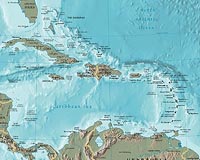| . |  |
. |
Minamisanriku, Japan (AFP) March 24, 2011 "Female, 20s, shoulder-length black hair, possible bank worker." It's a painfully thin description, like so many on the lists of unclaimed bodies posted in tsunami-struck towns across northeast Japan. In the devastated fishing port of Minamisanriku, where thousands of people are missing but only 300 bodies have been found, it's also a cruelly vague lead for the many desperate survivors looking for lost family members. After nearly two weeks of search-and-rescue missions that now only uncover the occasional body in what was once a picturesque town of 18,000, many people of Minamisanriku accept that the "missing" are most probably dead. Hopes were raised briefly after an 80-year-old woman and her 16-year-old grandson were found alive on Sunday in the same prefecture, nine days after the 9.0-magnitude quake and ensuing tsunami that swept away whole towns. But few honestly believe there will be any further dramatic rescues. And so their focus has reluctantly turned to hoping at least for a body that they can claim and lay to rest. In places like Minamisanriku, however, where the proportion of bodies recovered is so tiny compared to the number of missing, those hopes will largely go unrealised. "We believe in working until every missing person is accounted for. We are looking forward to that day," town mayor Jin Sato told AFP. "Unfortunately, there are those who were stripped bare by the force of the wave. These people are not easy to identify," he said. In the immediate aftermath of the March 11 tsunami, there were hopes that many of the missing were temporarily separated from each other by the destruction that left roads ripped out and communications cut. But despite daily appeals on national media by people asking lost relatives to contact them, reunions are few and far between. "I believe that many of the missing were dragged into the sea," Sato said. Rikuyu Honma, 61, last saw his brother on the day the wave struck. "I looked for him in the area where it happened. But now I thought I should come here to confirm his whereabouts," he said at a noticeboard giving hand-written details of recovered bodies. "White hair, large ear lobes, brown polo-neck, SoftBank telephone," read one entry on the list. "I think he is in the bay, but it's dangerous to search there, so I came here to check," Honma said. "He was washed away. I know he's gone. But if I can, I want to confirm myself that there is a body." Another survivor, Sato Masahiro, 44, who lost both his parents, said he was grateful for having found the body of his mother. "Compared to the lingering doubt of having a missing person, to find the body gives you some sort of peace," Masahiro said. His father died in an emergency medical centre an hour after being rescued from the rubble, but his mother remained missing for days. "All those days, I couldn't find her. But I knew she must be there somewhere. My sister kept dreaming that mother was trapped somewhere in the kitchen. And then we finally found her." Fire service rescue workers from Kyoto assigned to one sector of the town are now finding two or three bodies a day in a vast wasteland of twisted iron, scorched timber and debris that stretches two kilometres (more than a mile) inland. "We've searched about as much as we can without using heavy machinery," one rescuer said. Calling in the earth-movers remains a sensitive issue, given the implicit acknowledgement that the hunt for survivors has been called off. "The body count is going to climb. We are aware of the fact that there are more. We are preparing the heavy machinery to find the missing people," Mayor Sato said. Cremations will start on Wednesday, he said. Some victims have been buried in mass graves, while records and DNA samples are kept of unidentified bodies to facilitate any future identification. While more corpses will certainly be recovered inland when layers of debris are scraped away by diggers, the sea is also being combed for those that were swept away by the tsunami. The Japanese Coast Guard said 53 bodies had so far been recovered in a search over a vast swathe of the Pacific coast from Hokkaido Island in the far north down to just above Tokyo. "There will be many bodies, I'm pretty sure we haven't found them all," said local fireman Nobuo Omori, who took part in rescue missions in the immediate aftermath of the disaster. "In the end we don't know how many of the missing we'll ever find, but there are many sinking in the ocean who will never be discovered," he said.
Share This Article With Planet Earth
Related Links Bringing Order To A World Of Disasters When the Earth Quakes A world of storm and tempest
 Caribbean to test tsunami preparedness
Caribbean to test tsunami preparednessMiami (AFP) March 22, 2011 The first tsunami exercise for the Caribbean gets underway Wednesday with the participation of 33 countries, testing the region's emergency preparedness after Japan's recent devastation, officials said. Called "Caribbean Wave 11," the exercise does not directly involve communities but will test the warning systems and responses of emergency management agencies from around the region. It ... read more |
|
| The content herein, unless otherwise known to be public domain, are Copyright 1995-2010 - SpaceDaily. AFP and UPI Wire Stories are copyright Agence France-Presse and United Press International. ESA Portal Reports are copyright European Space Agency. All NASA sourced material is public domain. Additional copyrights may apply in whole or part to other bona fide parties. Advertising does not imply endorsement,agreement or approval of any opinions, statements or information provided by SpaceDaily on any Web page published or hosted by SpaceDaily. Privacy Statement |